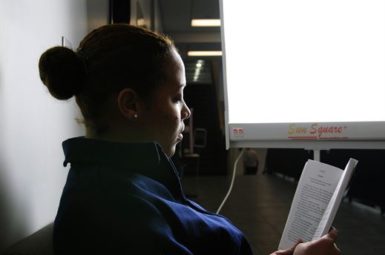Seasonal Affective Disorder : With a change in the seasons, you find yourself moody, lethargic, and/or even depressed with the oncoming cold temperatures and missing sunlight. This may be an indication that you could be having symptoms called seasonal affective disorder, or SAD. Normally it is suffered during the winter and autumn times, as a type of mood disorder that triggers symptoms closely related to depression or bipolar syndrome, which is why it’s often confused with it. Read on about seasonal affective disorder !
Symptoms of Seasonal Affective Disorder
People with SAD may suffer from anxiety, oversleep, weight gain, and irritability. Patients constantly feel tired and have trouble concentrating on anything. Often, it can fill a person’s mind with bad thoughts, low energy, a constant withdrawal from family. Difficulty in completing tasks is achieved is one of the indications. Individuals are dominated by a sense of hopelessness when affected by seasonal affective disorder.
The reasons behind seasonal affective disorder are not quite clear to experts. So far, it is said to be related to a lack of sunlight during the winter season, which can upset your biological clock that controls your sleep-wake pattern or the circadian rhythm, cause problems with your serotonin levels which is the brain chemical that affects moods, and unbalance your melatonin levels which also affects your mood and sleep patterns.

Living in areas where little sunlight appears during winter can heighten your risks for SAD.
At risk for SAD
You may be at risk for SAD if you fulfill these conditions :
- Living farther from the equator, where daylight hours in the winter are very short.
- Having a close relative that suffers from seasonal affective disorder.
- It is more commonly diagnosed in women than in men.
- Having between 15-55 years of age. The older you get, the lesser the risk of suffering from seasonal affective disorder.
- Already suffering from any major depression or bipolar disorder that worsens with the change of seasons.
Diagnosis for seasonal affective disorder
You maybe be diagnosed with seasonal affective disorder, if your mood disorder is high and/or appears during the colder months. Before a final diagnosis though, a blood test is done to rule out other conditions that can cause similar symptoms like low thyroid, which causes your body processes to slow down when your thyroid gland does not make enough thyroid hormone.
A mental health assessment is also done to get a clear idea of one feels and thinks and reasons and remembers. When the assessment is done, and you are effectively diagnosed with SAD, that is when certain treatments will be available for you.

Light therapy provides the lacking sunlight your body needs.
Treatments for seasonal affective disorder
1) Light Therapy or Photo therapy places you in front of a light box that gives out 10,000 lux of fluorescent light for 30 minutes or more a day. It is believed that the light helps your brain produce more serotonin and has mild side effects that don’t last long, such as headaches, blurry vision, and nausea.
2)Antidepressant medications, such as Citalopram. Fluoxetine, or Sertraline, are selective serotonin reuptake inhibitors which help in curing SAD.
3) Talk therapy or psychotherapy is also recommended if the previous two treatments fail to relieve your symptoms. Though it is hard to find a therapist who specializes in SAD, a cognitive behavioral therapist can help treat the disorder too.

Work out how to deal with negative thoughts and feelings and make positive changes.
Additionally, you can also make changes in your daily routine to combat the symptoms. Small changes like going outside when the sun is shining or simply opening the blinds of your window, keeping yourself active with exercise, can make a huge difference! Seasonal affective disorder is treatable. It is very much manageable. Any seasonal change does not mean that your happiness can be taken away by the lack of sunlight outside. If you take action to treat it, it is very much cureable!

